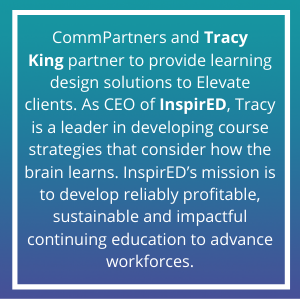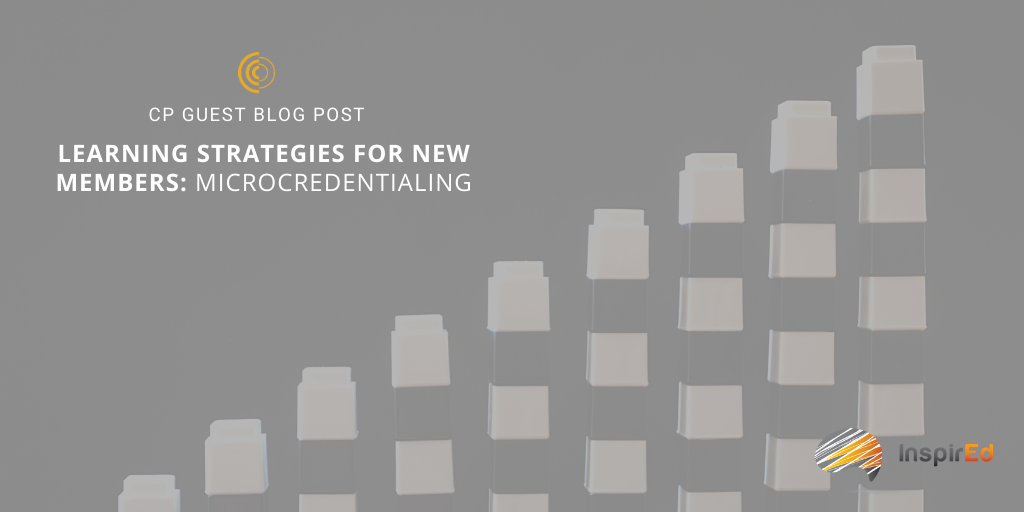This is a guest post written by Tracy King, CAE. As CEO of InspirEd, Tracy King leverages her more than 20 years in workforce development consulting with organizations on education strategy and learning design. Tracy is the author of Competitive Advantage: Create Continuing Education that is Profitable, Sustainable and Impactful, and she advises on how to grow reliably profitable and sustainable continuing education programs that transform learners. Tracy specializes in the intersection of learning science and technology. She’s a thought leader, invited speaker, master learning designer and DELP Scholar. Her work has been featured on NBC, ABC, FOX, USA Today, The Star Tribune and hundreds of nationally-syndicated television, newspaper, and magazine outlets. Tracy is a contributor to Microlearning in the Digital Age: The Design and Delivery of Learning in Snippets forthcoming by Routledge, Taylor & Francis group.
Learning inherently solves problems. It is designed to help us be or do something new, better, or differently. Learning programs that resolve top of mind challenges are a member prospect magnet. If you’ve been considering getting into the microcredentialing game, target the member segment you want to grow and build quick-win problem-solution learning that offers digital badge credibility (of course branded to your association).
Ideally, this should be the next step call to action you offer after member onboarding. While any of your meaty digital programs could serve as that next step, microlearning is easy to commit to and can be accessed via mobile for those professionals who just can’t take another minute in front of their laptop screen. If you’re going to design microlearning curriculum that solves problems and inspires behavior change, your organization and your new member both benefit from taking the additional step to qualify it as a digital badge. Your new member gets to solve a problem and share their accomplishment. Your organization’s visibility as the problem solver naturally grows.
One more tip: Free microlearning should dovetail into paid programs conveniently located in your LMS to learn more and tackle deeper skill development. By winning trust with a quality initial learning engagement, an additional investment becomes an easier decision to make.
Wins
-
Quick-win learning is an easy commitment and has higher completion rates
-
Giving new members a micro byte generates an appetite for higher-investment learning programs
-
Getting new members started immediately increases the likelihood they will realize membership value – and sharing their digital badge tells your story in their network giving you greater market visibility
These ideas work in tandem so it’s important that you familiarize yourself with both parts of this series. Once you feel comfortable with both Part 1 and 2 of Learning Strategies for New Members, it’s time to implement these strategies:
Start with what you have and map out the digital pieces you need to complete your programs so you can divide and conquer. Consider:
- What assets do we have, what do we need, and what can be modified to create our new member onboarding journey?
- What critical pain points could we begin addressing through microcredentialing that would not only attract new prospects but become the perfect segue to our paid programs?
With these strategies, you will be prepared to meet new members with curated content that will guide them effortlessly through your learning catalog.
If you’re interested in transforming your learning design, contact Tracy at info@inspired-ed.com. If you’re interested in Elevate LMS or in onboarding strategies for Elevate LMS, contact Meghan Gowen at mgowen@commpartners.com.


